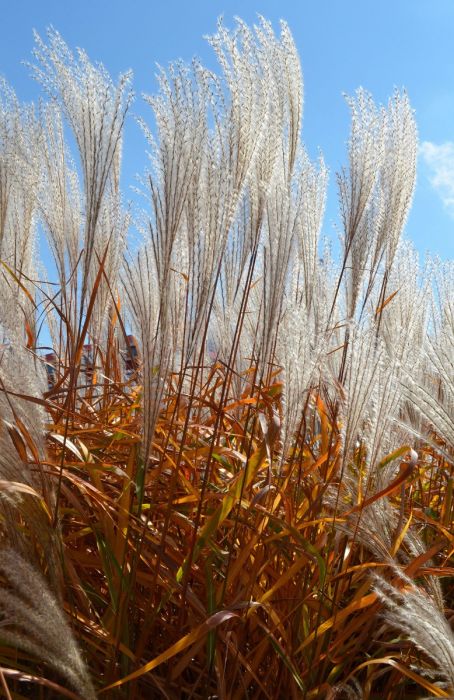Reliable Ornamental Grasses for Minnesota
There are a number of wonderful ornamental grasses for Minnesota and Gertens carries them! Check them out here!



Out of stock
Coming soon, still growingClump-forming, feathery plumes with orange fall color; This plant thrives in summer heat
Discover an unparalleled selection of perennials at Gertens! With the largest variety in Minnesota, we offer endless options of colorful perennials, natives, and pollinator plants to beautify your garden year after year. From vibrant flowers to lush foliage, our perennials are perfect for adding beauty and charm to your outdoor space. Visit Gertens today and see why we're known as Minnesota's Destination Garden Center!
Height: 5 feet
Spread: 4 feet
Sunlight: ![]()
![]()
Hardiness Zone: 3a
Other Names: Japanese Silver Grass
Description:
Clump-forming, feathery plumes with orange fall color; This plant thrives in summer heat
Ornamental Features
Flame Grass features bold plumes of coral-pink flowers rising above the foliage in late summer. The silver seed heads are carried on showy plumes displayed in abundance from early fall to late winter. Its grassy leaves are green in color. As an added bonus, the foliage turns a gorgeous coppery-bronze in the fall. The brick red stems are very colorful and add to the overall interest of the plant.
Landscape Attributes
Flame Grass is an herbaceous perennial grass with an upright spreading habit of growth. Its medium texture blends into the garden, but can always be balanced by a couple of finer or coarser plants for an effective composition.
This plant will require occasional maintenance and upkeep, and is best cleaned up in early spring before it resumes active growth for the season. It has no significant negative characteristics.
Flame Grass is recommended for the following landscape applications;
Planting & Growing
Flame Grass will grow to be about 5 feet tall at maturity, with a spread of 4 feet. It tends to be leggy, with a typical clearance of 1 foot from the ground, and should be underplanted with lower-growing perennials. It grows at a medium rate, and under ideal conditions can be expected to live for approximately 20 years.
This plant does best in full sun to partial shade. It prefers to grow in average to moist conditions, and shouldn't be allowed to dry out. It is not particular as to soil type or pH. It is highly tolerant of urban pollution and will even thrive in inner city environments. This is a selected variety of a species not originally from North America. It can be propagated by division; however, as a cultivated variety, be aware that it may be subject to certain restrictions or prohibitions on propagation.
| SKU | Container Size |
| G0380 | #1 Container (1 Gallon) |
| G0390 | #2 Container (2 Gallon) |
| G0400 | #5 Container (5 Gallon) |
* Not all container sizes may be available at this time. See store for details on specific container size availability.
| Common Family Name | Miscanthus |
|---|---|
| Gerten Grown Plants | Gerten Grown Plants |
| Sun Preference | Full-Sun, Part-Sun |
| Bloom Time | July, August, September |
| Mature Spread (Range) | Over 36" |
| Mature Height (Range) | 37" - 48" |
| USDA Hardiness Zone | 3, 4, 5, 6, 7, 8 |